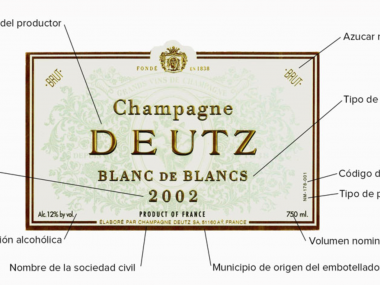Spain is the epicenter for the production of Tempranillo wines. This is the star red variety in terms of hectares of plantation. Tempranillo vines are widely distributed throughout the country, receiving synonyms according to the region. In the higher and colder sub-regions of La Rioja, Rioja Alta and Rioja Alavesa, it can fully mature two weeks earlier than Garnacha, which is why it has traditionally been blended with it.
The oldest reference for Tempranillo dates from the 13th century in the Ribera del Duero region. The name of Tempranillo is derived from the Spanish “temprano”, which refers to the true identity of the early maturing varieties.
Characteristics of Tempranillo wines
The Tempranillo bunches are compact, medium to large in size and the thick skinned grapes are small. This variety is relatively fertile, with early budding and ripening.
Tempranillo is sensitive to wind, extreme drought, oidium and euthypiosis, but generally presents good resistance to botrytis cinerea. When yields are high, the color intensity, acidity and fruity aromas are reduced.
Tempranillo wines are generally aged for 6 to 18 months in American or French oak, and have a high concentration of tannins, as well as medium acidity. As for the alcohol concentration, it is usually around 13-14.5%. Thus, they have less alcohol than Garnacha, Monastrell and Bobal wines.
Due to the traditional aging style of oak in Spain, Tempranillo often has an orange-red tone. While the taste is great, the texture is usually not oily or thick.
Taste profile of Tempranillo wines
Tempranillo is an easy to find and very diverse wine that also has a great flavor profile. It can appear in the mouth from fruit flavors such as cherry or plum, as well as other flavors of cedar, leather, tobacco, vanilla and dill.
Tempranillo has a full-bodied flavor from good harvests along with aging in new wood. However, having finer skins and larger grapes than Syrah, its color seems more translucent. Due to the traditional aging style of oak in Spain, it often has an orange-red hue. While the flavor is ample, its texture is usually not thick.
The finish is typically smooth and lingering with tannin flavors on both sides of the mouth. Tempranillo can be characterized as a medium or full-bodied wine with red fruit characteristics. If you have never tasted Tempranillo, you may find it similar to Cabernet Sauvignon.
Tempranillo wine regions in Spain
The Tempranillo wines in Ribera del Duero, are usually more modern cut and tend to age in French oak barrels so the fruit is much more concentrated and evident.
Some modern producers, from Navarra and Castilla La Mancha, season their Tempranillo wines with other varieties such as Cabernet Sauvignon and Merlot. Toro is perhaps the appellation that produces the most concentrated and alcoholic Tempranillo wines.
The best producers of Tempranillo in Spain are Artadi, Abel Mendoza, Finca Allende, Fernando Remírez de Ganuza, Remelluri, Roda, Señorío de San Vicente and Sierra Cantabria in La Rioja; Aalto, Alión, Alonso del Yerro, Alejandro Fernández Pesquera, Pago de los Capellanes, Pagos de Matanegra, Pérez Pascuas, Goyo García Viadero and Pingus in Ribera del Duero; Dominio del Bendito, Maurodos, Numanthia, Pintia, Telmo Rodríguez and Teso La Monja in Toro.
Ideal pairing for Tempranillo wines
Tempranillo combines well with all types of food because of its salty qualities. Regional Spanish cuisine, which includes roasted vegetables and cured meats, such as the luscious Jamón Ibérico de Bellota, creates an exceptional pairing.
However, wine can also work well with foods from around the world, such as pizza and tomato sauce dishes, grilled meats, smoked dishes, or dishes that have corn as a main ingredient.
Different types of aging
When buying a Tempranillo wine, it is important that you look at its label, to check its aging, which greatly affects the taste of the wine. There are five types of red wines:
- Young Red: Rarely aged in oak, it is released young and is destined to be consumed immediately. These are rare outside of Spain.
- Young Crianza Red: It is a medium step between young wine and aging. They have had a short ageing in wood during their elaboration, generally around 6 months. It also includes wines that have had a special aging in concrete with its fine lees.
- Crianza Red: They require 2 years of ageing, with 6 months in oak. Traditionally, producers use American oak, which is much stronger than other types of oak.
- Reserve Red: They have 3 years of aging, with 1 year in oak. These wines are a great step forward in quality and have rich, rounded flavors due to the minimum oak requirement.
- Grand Reserve Red: Wines from phenomenal harvests and aged a minimum of 5 years before release with 18 months of oak aging.






